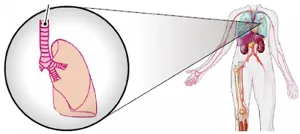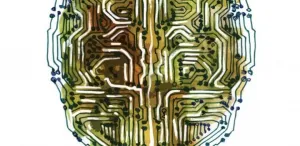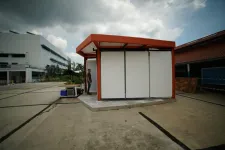(Press-News.org) New FLEET research confirms the potential for topological materials to substantially reduce the energy consumed by computing.
The collaboration of FLEET researchers from University of Wollongong, Monash University and UNSW have shown in a theoretical study that using topological insulators rather than conventional semiconductors to make transistors could reduce the gate voltage by half, and the energy used by each transistor by a factor of four.
To accomplish this, they had to find a way to overcome the famous 'Boltzmann's tyranny' that puts a lower limit on transistor switching energy.
They found a surprising result: gate voltage applied to a topological insulator could create a barrier to electron flow larger than the voltage itself times the electron charge, a result previously thought impossible.
The mission of the ARC Centre of Excellence in Future Low-Energy Electronics Technologies (FLEET) is to reduce the unsustainable energy load of information and computing technology (ICT), now consuming around 10% of global electricity.
TRANSISTORS: THEY'RE NOT JUST IN GRANDPA'S SHED RADIO
Computer chips contain billions of transistors - tiny electrical switches that perform the basic switching operations of computing.
Individual transistors today are as small as 5 nanometres across (5 millionths of a millimetre).
Transistors use a voltage applied to a 'gate' electrode to switch on and off the current flowing between 'source' and 'drain' electrodes. The energy used to charge up the gate electrode is thrown away each time each transistor turns on and off. A typical computer has literally billions of transistors turning on and off billions of times each second, adding up to a lot of energy.
Conventional transistors are made from semiconductors, materials which possess a 'bandgap' or a range of energies within which electrons are forbidden. The action of the voltage applied to the gate is to move this range of forbidden energies to allow (the 'on' state) or block (the 'off' state) the energies at which incoming electrons are moving from source to drain.
In an ideal transistor, 1 volt applied to the gate would move up the range of energies blocked by 1 electron-volt.
LEAKAGE 'TYRANNY' PUTS A LOWER LIMIT ON SWITCHING ENERGY
How big a barrier is needed for the transistor to operate correctly?
The problem is that the energies of the electrons coming from the source are inherently 'smeared out' at finite temperature, so there are always a few electrons with sufficiently-high energy to make it over the barrier. This 'leakage' current leads to wasted energy.
Basic thermodynamic considerations require that to reduce the current by a factor of 10 requires raising the barrier by about 60 milli-electron-volts at room temperature. But to avoid wasted energy via leakage current requires the current to be reduced by a factor of about 100,000, or a barrier of about 300 milli-electron-volts, which requires a gate voltage of at least 300 milli-volts.
This minimum gate voltage puts a lower limit on switching energy.
This is called 'Boltzmann's tyranny' after Ludwig Boltzmann who described the smearing of the energies of particles by temperature.
Boltzmann's tyranny is thought to limit how small the operating gate voltage can be for a transistor, no matter what material it is made of.
OVERCOMING BOLTZMANN'S LIMIT WITH NEW MATERIALS
Researchers in FLEET were curious whether a different effect could be used to make a barrier for electron flow in a transistor.
In some materials, an electric field can change the size of the bandgap. They wondered whether the electric field due to voltage applied to a gate electrode could be used to expand the bandgap and create a barrier to electrons. The answer is yes, but for typical materials this effect doesn't beat Boltzmann's tyranny: 1 volt applied to the gate can still only make a barrier no bigger than 1 electron-volt.
The researchers decided to look at a special class of materials called topological insulators, which have a bandgap that is effectively negative.
"Thin (two-dimensional) topological insulators are insulating in their interior, but conduct along their edges," explains lead author Muhammad Nadeem (University of Wollongong). "In this state they can function as the 'on' state of a transistor, with current carried by the conducting edges."
"The bandgap of a topological insulator can also be changed by an electric field," says Nadeem. "When it becomes positive, the material is no longer a topological insulator, and no longer has conducting edges, acting much like a regular semiconductor, with the bandgap acting as a barrier to electron flow (the 'off' state)."
However, the research team found that, unlike a regular semiconductor, the increase in the bandgap (in electron-volts) in the topological insulator could be larger than the voltage applied to the gate (in volts), beating Boltzmann's tyranny.
"The right topological materials could switch at voltages half as large as a similar conventional transistor, which would require only one fourth the energy," says co-investigator Dimi Culcer (UNSW).
WHERE TO FROM HERE?
Many challenges remain. The study is for the moment only theoretical. Co-investigator Xiaolin Wang (UOW) says "some of the candidate materials such as bismuthene, a single atom thick layer of bismuth arranged in a honeycomb structure, have only just begun to be studied in the laboratory, and haven't yet been made into transistors."
Other materials are still on the drawing board and it isn't yet known how to synthesize them. "However," says co-investigator Michael Fuhrer (Monash), "researchers within FLEET are working hard to make these new materials, characterize them, and incorporate them into electronic devices."
THE STUDY
Overcoming Boltzmann's Tyranny in a Transistor via the Topological Quantum Field Effect was published in Nano Letters in March 2021 (DOI 10.1021/acs.nanolett.1c00378)
The research was carried out by a collaboration between FLEET researchers at the University of Wollongong, University of New South Wales, and Monash University.
INFORMATION:
Chronic pain is among the most common chronic conditions in the United States, but estimates of its prevalence and impact vary widely. In 2019, the National Center for Health Statistics of the Centers for Disease Control and Prevention added a new set of questions relating to pain to its National Health Interview Survey (NHIS), a large household-based annual survey that offers valuable insights into the health statuses of U.S. adults nationwide. In an article published in Pain, researchers from Brigham and Women's Hospital and Mass Eye and Ear report that 50.2 million (20.5 percent) ...
Durham, NC - A phase 2 clinical trial whose results were released today in STEM CELLS Translational Medicine might point to a way to overcome bronchopulmonary dysplasia (BPD), a major cause of death in preterm infants. The study, conducted by researchers at Samsung Medical Center, Sungkyunkwan University and Asan Medical Center Children's Hospital in Seoul, evaluates the effectiveness of treating these infants by transplanting umbilical cord blood-derived mesenchymal stem cells (UCB-MSCs) directly into their tracheas.
Early results showed signs of improvement for the most immature infants included in the trial.
BPD is a serious breathing disorder in which the lungs do not develop normally. Most infants who develop BPD are born more than ...
Embargoed press materials are now available for the virtual Experimental Biology (EB) 2021 meeting, featuring cutting-edge multidisciplinary research from across the life sciences. EB 2021, to be held April 27-30, is the annual meeting of five scientific societies bringing together thousands of scientists and 25 guest societies in one interdisciplinary community.
Complete a Press Registration Form for complimentary meeting registration and full access to our virtual newsroom. We encourage advance registration as it may take up to a day to receive access.
Join Our Virtual Press Conference
Reporters are invited to join a live Q&A discussion of selected research announcements during a virtual EB press conference held ...
Eyes play an important role in social communication by expressing the intentions of our interlocutors, and even more so in times of pandemic when half of the face is hidden. But is this eye contact automatic and rapid? Is it based on a priority attentional reaction or, on the contrary, on a particular emotional reaction? To answer these questions, researchers at the University of Geneva (UNIGE), Switzerland, looked at the way we process human gaze, focusing on the estimation of the temporal duration of social interactions. They discovered that when we make eye contact with another person, our attention is directly solicited, causing a distortion in our temporal perception. As a result, time seems shorter than it really is. ...
A biomimicking "spiking" neural network on a microchip has enabled KAUST researchers to lay the foundation for developing more efficient hardware-based artificial intelligence computing systems.
Artificial intelligence technology is developing rapidly, with an explosion of new applications across advanced automation, data mining and interpretation, healthcare and marketing, to name a few. Such systems are based on a mathematical artificial neural network (ANN) composed of layers of decision-making nodes. Labeled data is first fed into the system to "train" the model to respond a certain way, then ...
LA JOLLA, CALIF. - April 20, 2021 Scientists at Sanford Burnham Prebys have identified, at an atomic level, how a part of a protein called PLEKHA7 interacts with a cell's membrane to regulate important intercellular communications. The research, published in the journal Structure, points to hotspots within PLEKHA7 as targets for drugs. These targets could be key in designing treatments for advanced colon, breast and ovarian cancers.
The region, or domain, in PLEKHA7 that the researchers examined, pleckstrin homology (PH), is commonly found in proteins ...
A long-awaited, high-tech analysis of the upper body of famed fossil "Little Foot" opens a window to a pivotal period when human ancestors diverged from apes, new USC research shows.
Little Foot's shoulder assembly proved key to interpreting an early branch of the human evolutionary tree. Scientists at the END ...
Recent growth in the number of healthcare workers providing home care for Medicare patients is "small and inadequate" compared with the increasing demand in an aging America, a new study suggests.
To have hope of keeping up, Medicare likely will need to reconsider how it compensates providers for home care, the researchers say.
"Only 0.7 percent of physicians in Medicare provided home care regularly," said Nengliang "Aaron" Yao, PhD, a researcher with the University of Virginia School of Medicine's Section of Geriatric Medicine. "Targeted policies are needed to support home-based medical care."
Trends in Home Care
Growth in the field of home care was "modest but steady" between 2012 and 2016, with most of the growth coming from increasing numbers of nurse practitioners providing home ...
A novel system of chilled panels that can replace air conditioning can also help reduce the risk of indoor disease transmission, suggests new analysis from the University of British Columbia, University of Pennsylvania and Princeton University.
The researchers computed air conditioning requirements in 60 of the world's most populous cities--with the additional ventilation required due to COVID-19. Then, they compared the energy costs with their cooling method, using the chilled panels and natural ventilation.
The results, published in the COVID-19 edition of Applied Energy, showed that the alternative solution can save up to 45 per cent of the required energy, while ensuring building occupants are comfortable ...
Nearly three-quarters of Earth's land had been transformed by humans by 10,000BC, but new research shows it largely wasn't at the expense of the natural world.
A study involving University of Queensland researchers combined global maps of population and land use over the past 12,000 years with current biodiversity data, demonstrating the effective environmental stewardship of Indigenous and traditional peoples.
UQ's Professor James Watson said the findings challenged the modern assumption that human 'development' inevitably led to environmental destruction.
"There's a paradigm among natural scientists, conservationists and policymakers that ...






